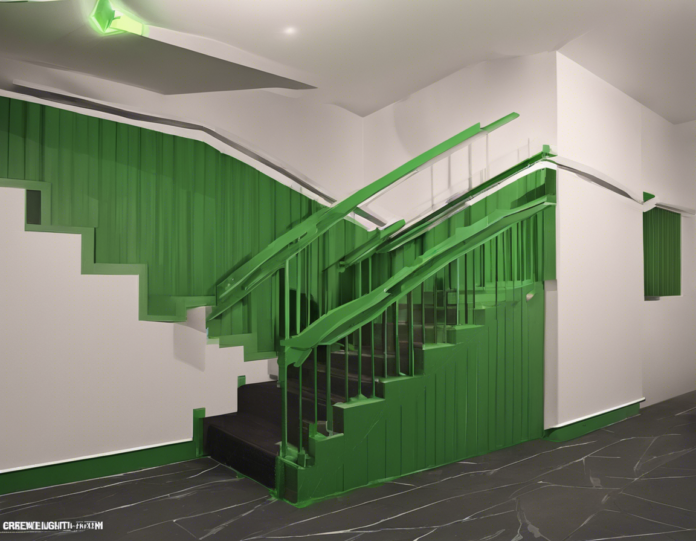Introduction
In the realm of home design and architecture, bannisters play a significant role in both aesthetics and functionality. They are not merely a safety feature to prevent falls on staircases but also contribute to the overall charm and character of a space. This article aims to delve deep into the benefits of using a bannister in your home, focusing on why they are essential, the various types available, and how they can elevate the look and feel of your property.
Why are Bannisters Essential?
One of the primary reasons bannisters are essential in homes is safety. They provide support and stability when navigating stairs, especially for young children, elderly individuals, and people with mobility issues. Bannisters significantly reduce the risk of accidents and falls, making them a crucial aspect of any staircase.
Another crucial aspect is building regulations. In many regions, building codes mandate the installation of bannisters on staircases to ensure compliance with safety standards. Failure to incorporate bannisters could result in penalties or difficulties with property inspections, highlighting the importance of these structures.
Types of Bannisters
Bannisters come in a variety of styles and materials, allowing homeowners to choose based on their preferences and the overall design scheme of their property. Some common types include:
-
Wooden Bannisters: Traditional and versatile, wooden bannisters offer a classic look that complements various interior styles. They can be stained or painted to match the staircase or other wood elements in the home.
-
Metal Bannisters: Sleek and modern, metal bannisters are popular in contemporary homes. They are durable and low-maintenance, making them a practical choice for high-traffic areas.
-
Glass Bannisters: Glass bannisters create a sense of openness and lightness, making them ideal for modern and minimalist interiors. They can be customized with frosted or colored glass for added visual interest.
-
Wrought Iron Bannisters: Ornate and elegant, wrought iron bannisters add a touch of sophistication to staircases. They are often seen in homes with a traditional or European-inspired design aesthetic.
Benefits of Using a Bannister
Apart from safety and compliance with regulations, using a bannister in your home offers several benefits:
-
Enhanced Aesthetics: Bannisters are a decorative element that can enhance the overall look of your staircase and home. They come in various designs and finishes, allowing you to choose one that complements your interior décor.
-
Increased Property Value: Well-designed bannisters can add value to your property by improving its visual appeal and functionality. Potential buyers often appreciate the presence of bannisters as they signal attention to detail and quality craftsmanship.
-
Improved Accessibility: Bannisters provide support not only on stairs but also on ramps, balconies, and other elevated areas in your home. They make these spaces more accessible to individuals of all ages and abilities.
-
Customization Options: With a wide range of materials, colors, and styles available, you can customize your bannister to suit your personal taste and design preferences. This versatility allows you to create a unique look that reflects your individuality.
Maintenance and Care
To ensure that your bannister retains its beauty and functionality, regular maintenance is essential. Depending on the material, maintenance tasks may include:
- Wooden Bannisters: Periodic staining or painting to prevent damage from moisture or wear.
- Metal Bannisters: Cleaning with a mild detergent and inspecting for corrosion or loose components.
- Glass Bannisters: Wiping down with a glass cleaner to maintain transparency and remove smudges.
- Wrought Iron Bannisters: Applying a protective coating to prevent rust and corrosion.
By following a maintenance routine tailored to the type of bannister you have, you can prolong its lifespan and keep it looking its best for years to come.
FAQs
- Do I need a bannister if my staircase is against a wall?
-
While a wall can offer some support, a bannister provides an additional layer of safety and stability, especially in high-traffic areas.
-
Can I install a bannister myself?
-
It is recommended to hire a professional for bannister installation to ensure compliance with building codes and proper anchoring for safety.
-
Are bannisters only essential for indoor staircases?
-
Bannisters are beneficial for both indoor and outdoor staircases, ramps, balconies, and any elevated area where support is needed.
-
How do I choose the right bannister for my home?
-
Consider your home’s design style, maintenance preferences, and budget when selecting a bannister. Consulting with a professional can also help you make an informed choice.
-
Can bannisters be added to existing staircases?
- Yes, bannisters can be retrofitted onto existing staircases, providing an opportunity to enhance safety and aesthetics in older homes.
Conclusion
In conclusion, bannisters are not only functional but also serve as a design element that can elevate the look and feel of your home. From enhancing safety to adding aesthetic appeal, bannisters play a crucial role in both residential and commercial spaces. By understanding the benefits of using a bannister and exploring the various types available, homeowners can make informed decisions about integrating these structures into their properties. Remember to prioritize maintenance and care to ensure that your bannister remains a valuable and enduring feature of your home.












